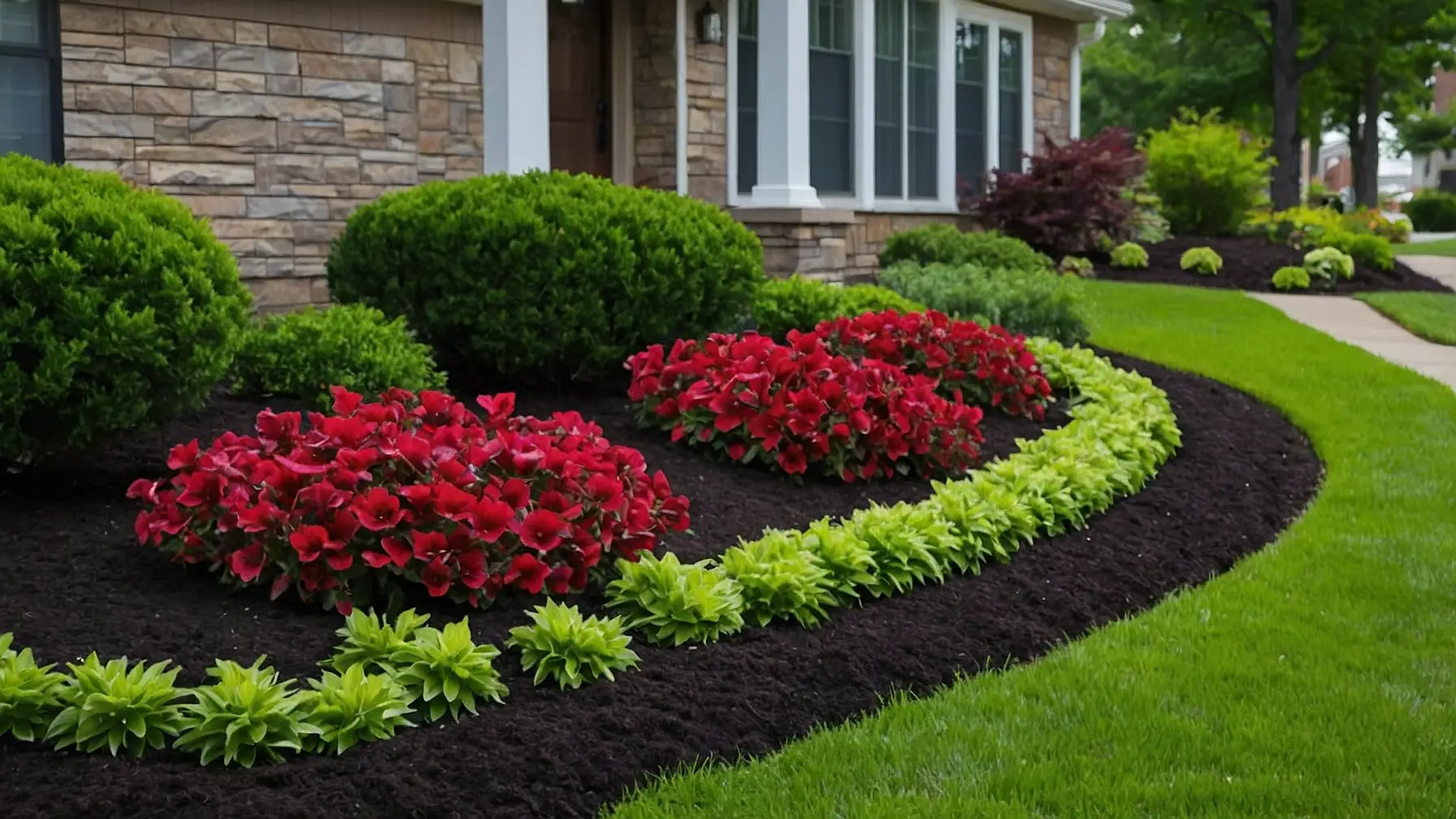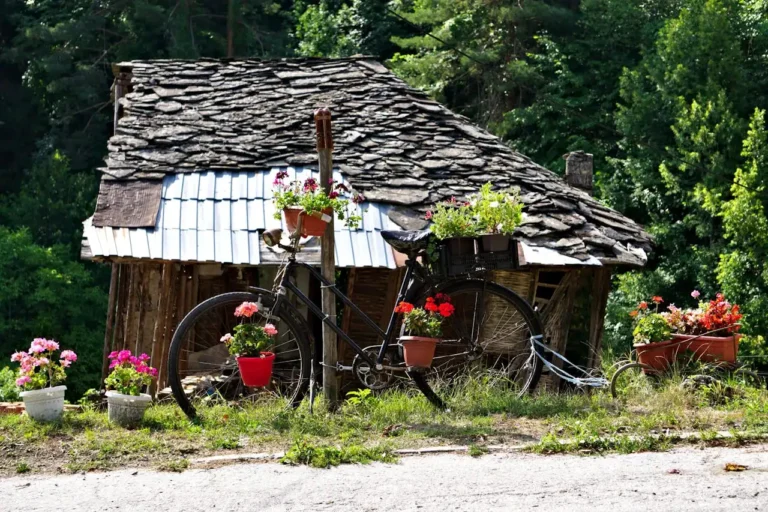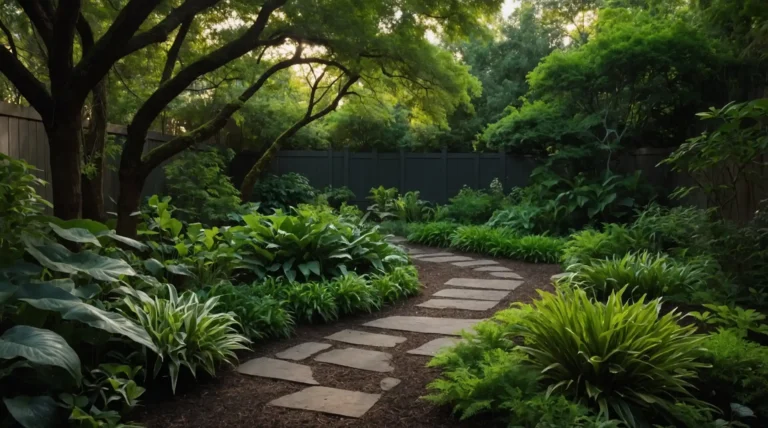10 Front Flower Bed Ideas For Home Entrance
Front flower beds create a warm welcome to your home. They add color, texture, and charm to your entrance. With the right design, these beds can boost your curb appeal and make a great first impression.
You can choose from many styles and plants for your front flower beds. From simple layouts to more complex designs, there are options to fit every taste and budget.
The key is picking a look that matches your home and personal style.
1: Hydrangeas for Pop of Color
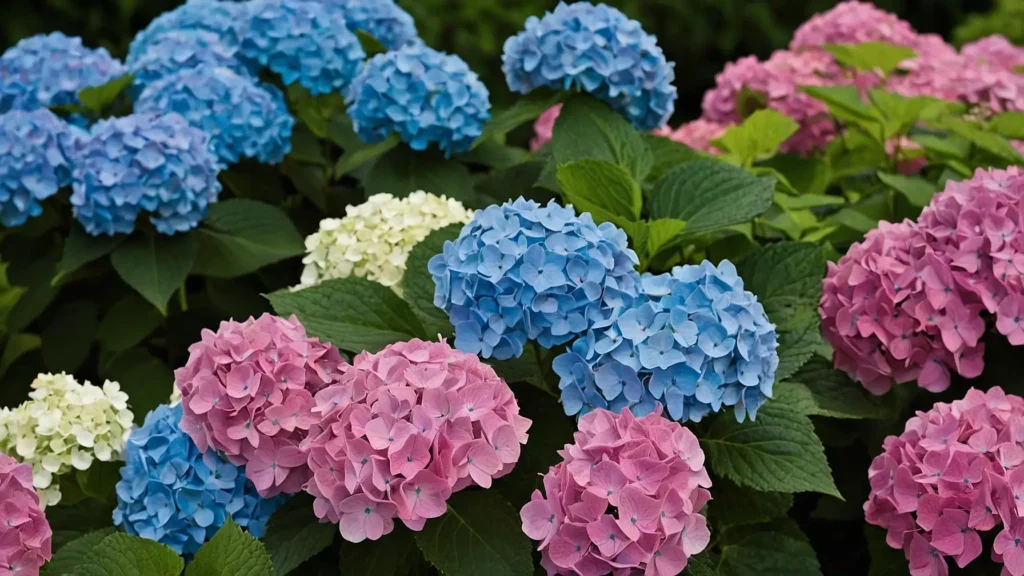
Hydrangeas can add a stunning burst of color to your front flower bed.
These showy blooms come in shades of pink, blue, purple, and white.
Plant hydrangeas near your home’s entrance for an eye-catching welcome.
They work well in pots on the porch or in garden borders.
2: Lavender for a Fragrant Entrance
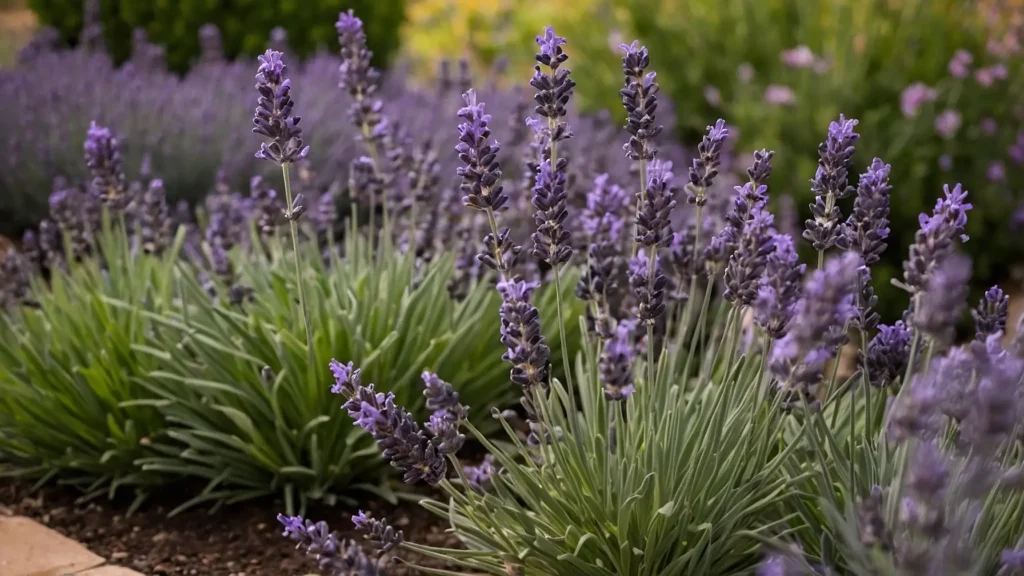
Lavender makes a lovely choice for your front flower bed. It adds a sweet scent to welcome you home.
Plant lavender near your front door or along the path. The purple flowers look pretty and smell nice.
3: Hostas for Shaded Areas
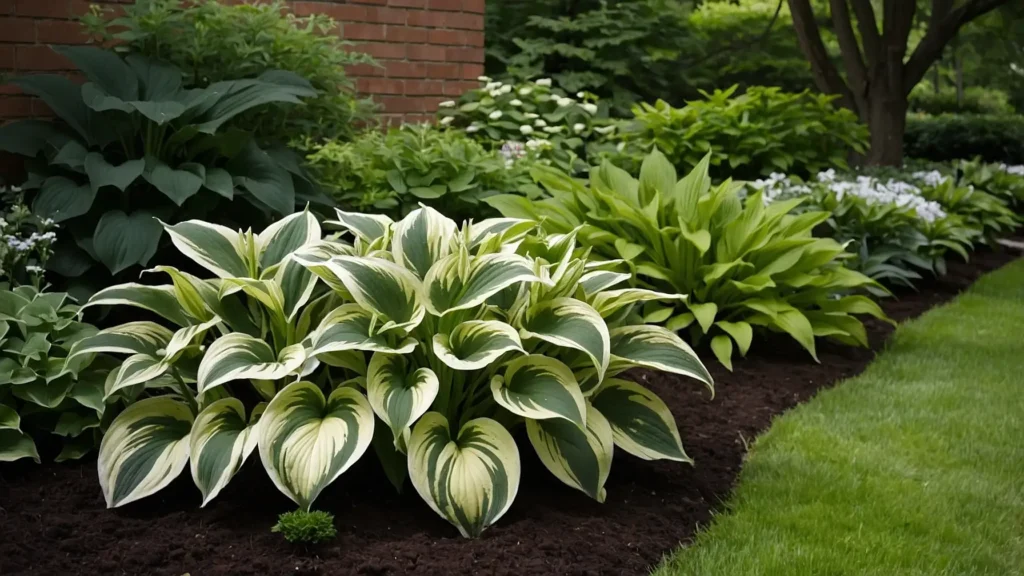
Hostas are perfect for shady front flower beds.
These hardy plants thrive in low-light areas. You can choose from many sizes and colors to suit your space.
Plant hostas near your home’s entrance for a lush look. They need little care and come back year after year.
4: Ornamental Grasses for Texture
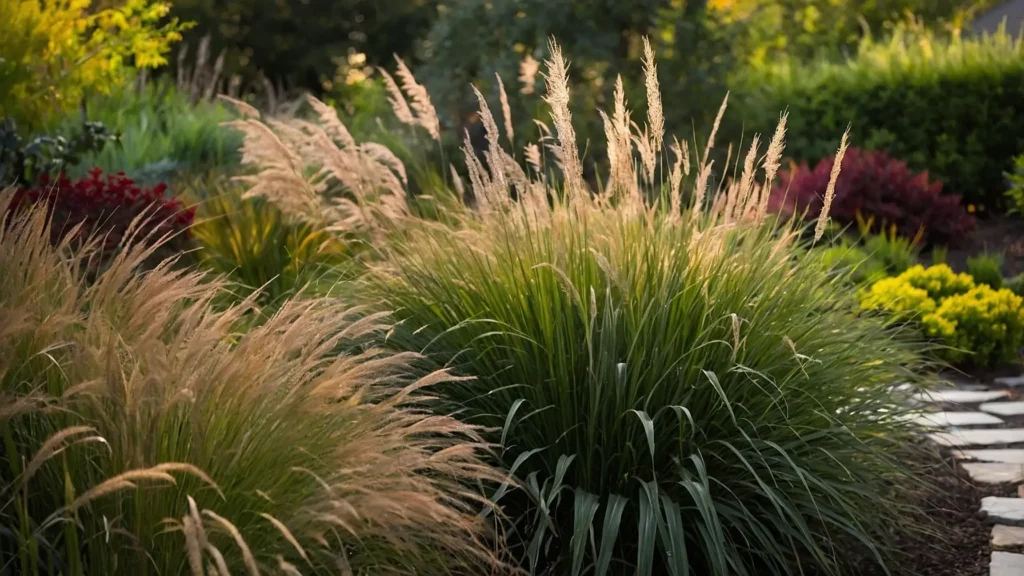
Ornamental grasses can add beautiful texture to your front flower bed. Try planting maiden grass, fountain grass, or pampas grass.
These grasses sway in the breeze and create visual interest.
Many ornamental grasses bloom in the fall. This adds seasonal color to your home’s entrance.
5: Boxwood Shrubs for Structure
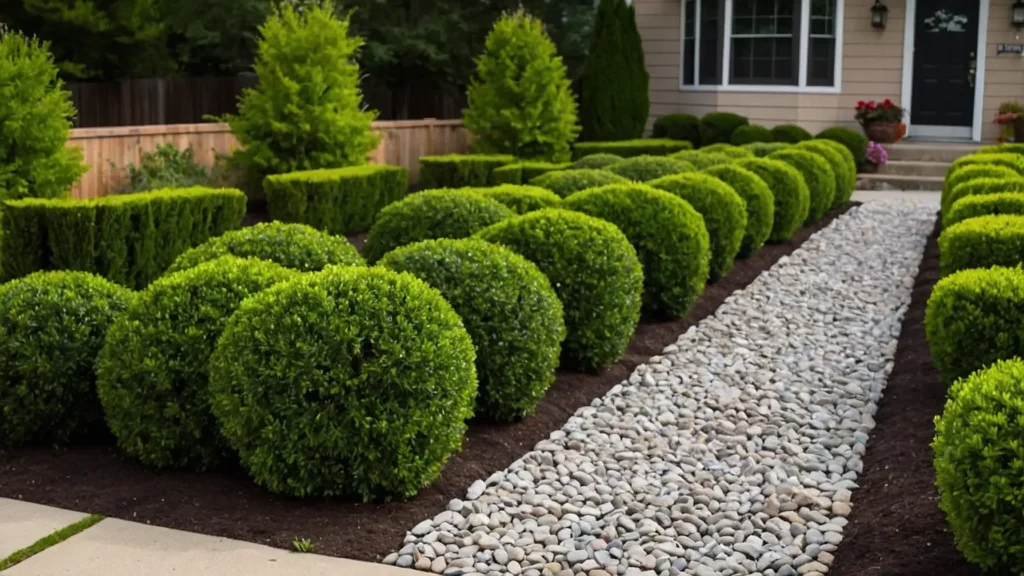
Boxwood shrubs add structure to your front flower beds.
You can use them to create neat borders around colorful flowers. They stay green all year and are easy to shape.
6: Tulips for Seasonal Bloom

Tulips bring a burst of color to your front flower beds each spring. Plant bulbs in fall for blooms the next year.
Mix different tulip varieties for a range of colors and bloom times. This extends the flowering season in your garden.
7: Ivy for Ground Cover
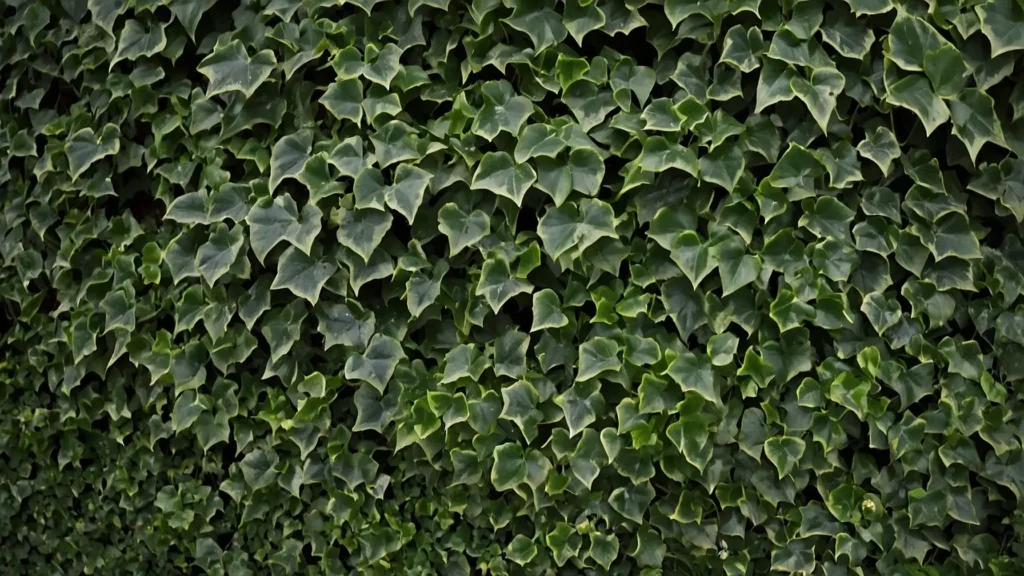
Ivy makes a great ground cover for front flower beds. It grows quickly and spreads to fill empty spaces. You can plant ivy around other flowers or let it cover larger areas.
Ivy stays green year-round in many climates. This gives your front yard a lush look even in winter. It also helps stop weeds from growing.
8: Roses for Classic Beauty
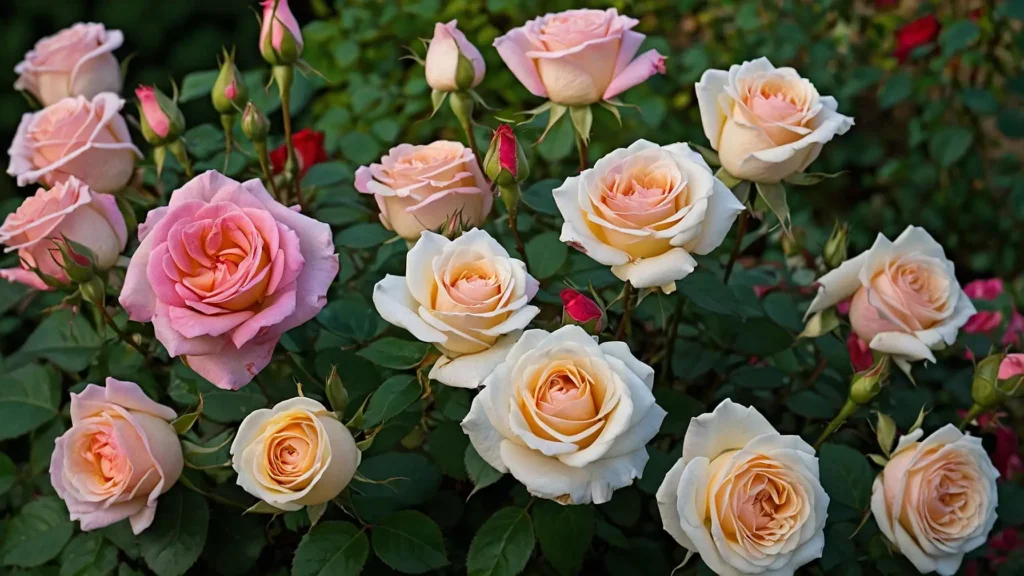
Roses bring timeless elegance to your front flower bed.
Choose a sunny spot for these beloved blooms. Mix colors like red, pink, and white for visual interest.
Plant roses in groups of three or five. This creates a fuller look. Remember to prune regularly for healthy growth and more flowers.
9: Daisies for a Cheerful Touch
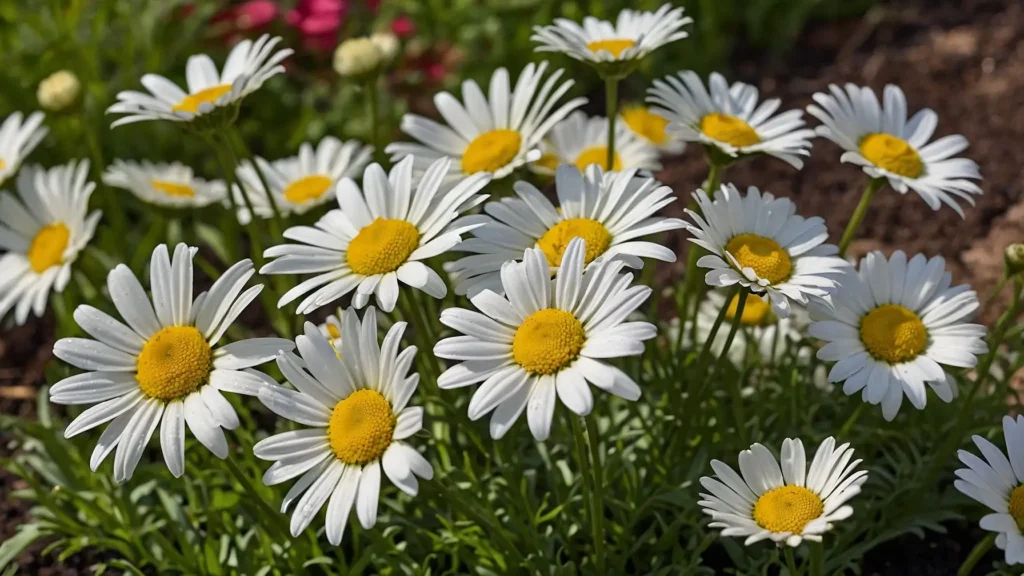
Daisies bring instant cheer to your front flower bed. Plant white daisies for a classic look. Mix in yellow or pink varieties for extra color.
Daisies are easy to grow and bloom for months. They’ll give your home entrance a welcoming, sunny vibe.
10: Daylilies for Easy Maintenance
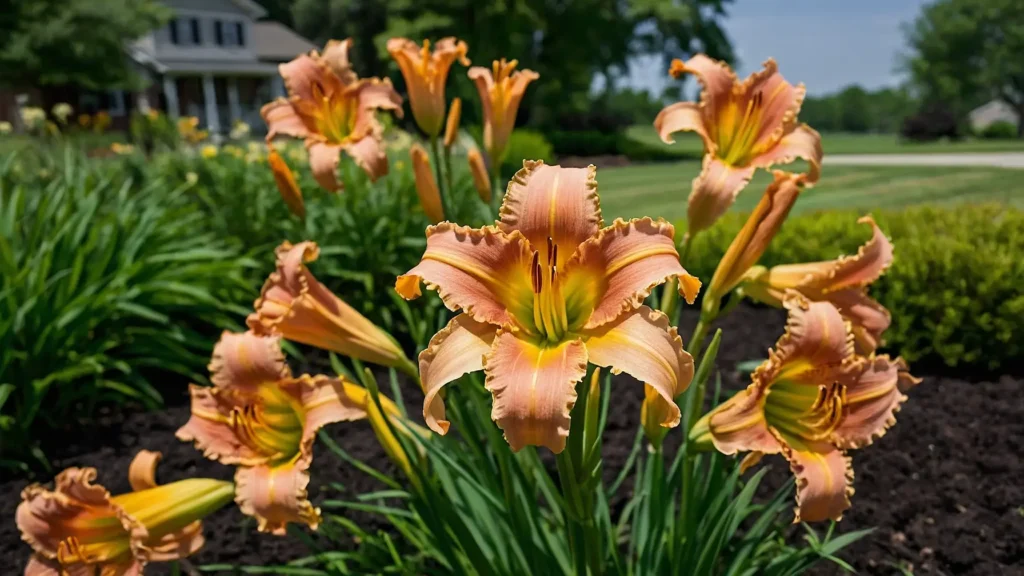
Daylilies are a great choice for your front flower bed.
They need little care and bloom for a long time. You can plant them in groups to make a big impact.
How to Care for an Entrance Front Flower Bed
A well-maintained entrance front flower bed can greatly enhance your home’s curb appeal and create a welcoming atmosphere for visitors.
By following these care tips, you can ensure that your front flower bed remains healthy, vibrant, and attractive throughout the seasons.
1. Proper Watering
- Watering Deeply:
- Encourage Root Growth: Watering your flower bed deeply encourages the roots to grow deeper into the soil, making the plants more resilient and drought-resistant. Water slowly and thoroughly, allowing the water to penetrate the soil to a depth of 6-8 inches.
- Avoid Frequent Shallow Watering: Frequent shallow watering can lead to weak, shallow root systems and make the plants more susceptible to stress and disease. Instead, focus on watering deeply and less frequently, depending on the specific needs of your plants and the climate conditions.
- Watering Techniques:
- Drip Irrigation or Soaker Hoses: Consider installing a drip irrigation system or using soaker hoses to efficiently water your front flower bed. These methods deliver water directly to the base of the plants, minimizing water loss through evaporation and reducing the risk of fungal diseases.
- Watering in the Morning: Water your flower bed in the morning to allow the foliage to dry out during the day. Watering in the evening can lead to prolonged moisture on the leaves, which can promote fungal growth and disease.
2. Mulching
- Benefits of Mulching:
- Moisture Retention: Applying a layer of mulch helps retain moisture in the soil by reducing evaporation. This is particularly beneficial during hot and dry periods, as it minimizes the need for frequent watering and keeps the soil consistently moist.
- Weed Suppression: Mulch acts as a barrier, preventing weed seeds from germinating and competing with your desired plants for nutrients and water. By suppressing weed growth, mulching saves you time and effort in maintaining a tidy and weed-free flower bed.
- Organic Mulch Options:
- Shredded Bark or Wood Chips: Shredded bark or wood chips are popular mulch options for front flower beds. They have a natural appearance, break down slowly, and improve soil structure over time. Apply a 2-3 inch layer of mulch, keeping it away from the base of the plants to prevent moisture buildup and potential rot.
- Pine Needles or Straw: For plants that prefer slightly acidic soil, such as azaleas or rhododendrons, pine needles or straw can be used as mulch. These materials also provide a unique texture and aesthetic to your front flower bed.
3. Fertilizing and Soil Care
- Soil Testing:
- Assessing Soil Nutrients: Before applying fertilizers, it’s important to assess the nutrient levels in your soil. Conduct a soil test to determine the pH level and the presence of essential nutrients like nitrogen, phosphorus, and potassium. This information will guide you in selecting the appropriate fertilizers for your specific plants.
- Addressing Soil Deficiencies: Based on the soil test results, you can amend the soil with the necessary nutrients or adjust the pH level to ensure optimal growing conditions for your plants. Adding organic matter, such as compost or well-rotted manure, can improve soil structure and fertility.
- Fertilizing Schedule:
- Slow-Release Fertilizers: Use slow-release fertilizers that provide a steady supply of nutrients over an extended period. These fertilizers minimize the risk of overfeeding and reduce the frequency of application. Follow the manufacturer’s instructions for application rates and timing.
- Seasonal Fertilization: Generally, it’s recommended to fertilize your front flower bed in early spring as plants start to actively grow, and then again in mid to late summer to support continued growth and flowering. Avoid fertilizing in late fall, as this can stimulate new growth that may not harden off before winter.
4. Pruning and Deadheading
- Pruning for Shape and Size:
- Maintaining Plant Structure: Regular pruning helps maintain the desired shape and size of your plants, preventing them from becoming overgrown or leggy. Prune after flowering for plants that bloom on old wood, and in early spring for plants that bloom on new growth.
- Promoting Healthy Growth: Pruning encourages healthy growth by removing damaged, diseased, or crossing branches. This improves air circulation and allows more light to reach the center of the plant, reducing the risk of fungal diseases and pest infestations.
- Deadheading for Continuous Blooming:
- Removing Spent Flowers: Deadheading, or removing spent flowers, encourages many annuals and perennials to continue producing new blooms. By regularly removing faded flowers, you prevent the plant from setting seed and redirect its energy towards producing more flowers.
- Extending the Blooming Season: Consistent deadheading can significantly extend the blooming season of your front flower bed, ensuring a continuous display of vibrant colors. Pinch or snip off the spent flowers just above the nearest leaf or bud to maintain a tidy appearance.
5. Pest and Disease Control
- Monitoring and Identification:
- Regular Inspection: Regularly inspect your front flower bed for signs of pest infestations or disease. Look for discolored leaves, wilting, abnormal growth, or visible insects on the plants. Early detection allows for prompt intervention and minimizes the spread of problems.
- Identifying Common Issues: Familiarize yourself with common pests and diseases that affect the specific plants in

